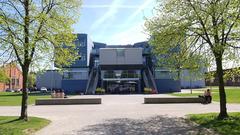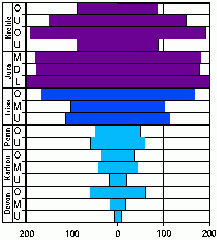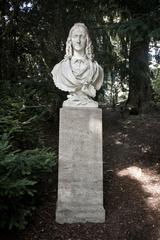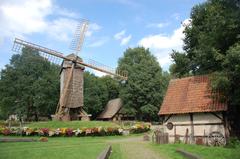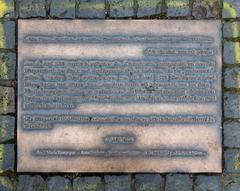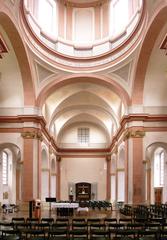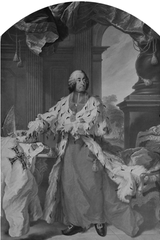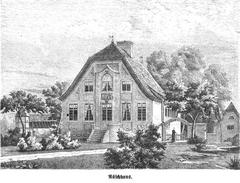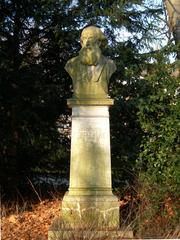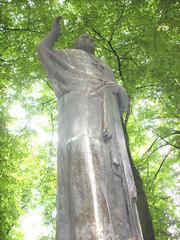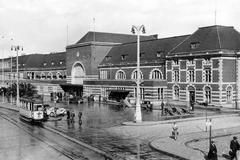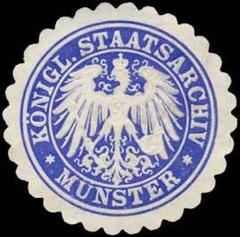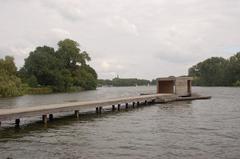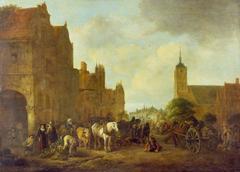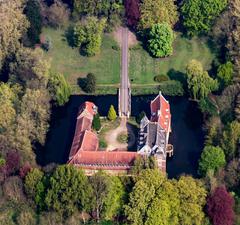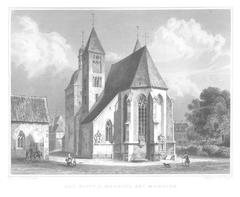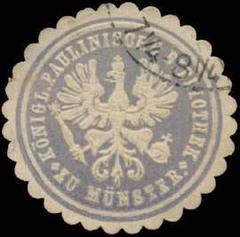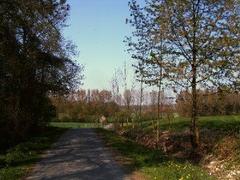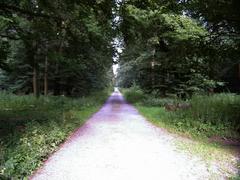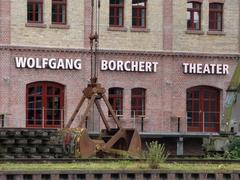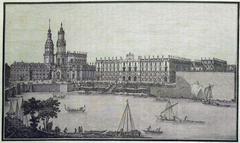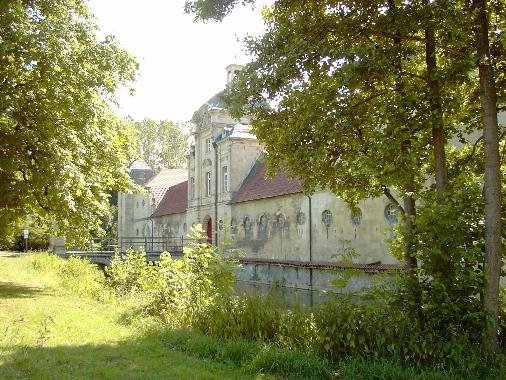
Comprehensive Guide to Visiting Haus Stapel, Münster, Germany
Date: 01/08/2024
Introduction
Haus Stapel, located near Havixbeck in Münster, Germany, is a captivating historical estate that attracts visitors interested in both architecture and history. As one of the largest moated castles in Westphalia, Haus Stapel’s history stretches back to 1211 when it was first documented as the seat of the Kerckerinck family. The name ‘Stapel’ is derived from the Middle High German word ‘stave,’ which signifies ‘jam’ and refers to the elaborate water management systems around the estate. These systems have been integral to the estate’s function and survival through the Middle Ages and beyond (Münsterland, Wikipedia).
Architecturally, Haus Stapel showcases various styles from different eras, including features from the Renaissance and Baroque periods. The estate’s main building, constructed between 1819 and 1827, was designed by August Reinking and commissioned by Ernst Konstantin von Droste zu Hülshoff, a member of the prominent Droste zu Hülshoff family. This blend of historical and architectural significance has earned Haus Stapel a designation as a ‘Nationally Valuable Cultural Monument’ by the German government, bolstering efforts for its preservation and restoration (Münsterland, Wikipedia).
For visitors, Haus Stapel offers a unique glimpse into Westphalian history, with limited public access through special events, guided tours, and garden tours. This guide provides comprehensive information on visiting hours, ticket prices, travel tips, architectural highlights, and nearby attractions, ensuring a memorable and enriching experience at this historical landmark.
Table of Contents
- Introduction
- Early Origins and Etymology
- Architectural Evolution
- Ownership and Lineage
- Cultural and Historical Significance
- Haus Stapel Visiting Hours and Events
- Travel Tips and Nearby Attractions
- Accessibility and Visitor Information
- Modern-Day Preservation
- FAQ
- Conclusion
- Sources
Early Origins and Etymology
Haus Stapel, located near Havixbeck in Münster, Germany, is one of the largest moated castles in Westphalia. The earliest documented mention of Haus Stapel dates back to 1211, when it was recorded as the seat of the Kerckerinck family (Münsterland). The name “Stapel” is derived from the Middle High German word “stave,” meaning “jam,” which refers to the extensive dams and water management systems that existed around the estate since the early Middle Ages. These dams were used to impound the water of the Münstersche Aa river, creating large fishery facilities that were crucial during periods of abstinence in medieval times (Wikipedia).
Architectural Evolution
The architectural history of Haus Stapel spans several centuries, reflecting various styles and periods. The flanking towers of the outer bailey and other outer buildings, except for the gate tower, were constructed between 1607 and 1608. The gate tower itself was added in 1719, possibly based on designs by Maximilian von Welsch (Münsterland). The neoclassical main building, which stands today, was built between 1819 and 1827 according to the plans of August Reinking. This construction was commissioned by Ernst Konstantin von Droste zu Hülshoff, a member of the prominent Droste zu Hülshoff family (Wikipedia).
Ownership and Lineage
Throughout its history, Haus Stapel has remained within the hands of landed gentry families, never being sold but rather passed down through female succession. This continuity of ownership has preserved the estate’s historical integrity and familial heritage. The estate was inherited by Klemens Freiherr Droste zu Hülshoff in 1880, who, along with his wife, brought a grand piano as a wedding gift. This piano still resides in the festival hall and is used during concerts held at the estate (Münsterland).
Cultural and Historical Significance
Haus Stapel is not just an architectural marvel but also a significant cultural and historical monument. The estate’s extensive water management systems, including the deep and wide ditches in the castle park, are remnants of the medieval dams that were crucial for operating the fishery facilities. These systems highlight the ingenuity and resourcefulness of the estate’s early inhabitants (Wikipedia).
The estate also features a private museum, established by the last miller, Heinz Seesing, in the building that once housed the Stapler Wassermühle, a water mill located a few meters downstream from the castle. Although the mill’s technology has been decommissioned, the museum offers a glimpse into the historical operations of the estate (Wikipedia).
Haus Stapel Visiting Hours and Events
While Haus Stapel is a privately inhabited estate and generally not open to the public, it does open its doors a few times a year for special events. Visitors can explore the park, inner courtyard, and staircase during concerts held at the estate. Additionally, on “Open Monument Day,” which falls on the second Sunday in September, guided tours of the ballroom are available. Since 2023, garden tours have been offered from February to September, led by the estate’s owner, Dr. Mechthild Freifrau Raitz von Frentz, on the first Saturday of each month (Münsterland).
Travel Tips and Nearby Attractions
When planning your visit to Haus Stapel, consider exploring the surrounding Münster region, known for its rich historical sites and picturesque landscapes. Nearby attractions include the Burg Hülshoff, the birthplace of the famous German poet Annette von Droste-Hülshoff, and the Baumberge hills, perfect for hiking and nature walks (Germany Travel, The Crazy Tourist).
Accessibility and Visitor Information
Haus Stapel is accessible by car, with ample parking available on-site. While the estate itself is not fully wheelchair accessible due to its historic nature, efforts are being made to improve accessibility wherever possible. It is recommended to check the official website or contact the estate directly for the most up-to-date information on visiting hours, ticket prices, and accessibility options.
Modern-Day Preservation
In recent years, Haus Stapel has been recognized as a “Nationally Valuable Cultural Monument” by the German government. This designation has facilitated funding for the restoration and preservation of the estate. The German Foundation for Monument Protection has also supported various restoration projects, including the re-roofing of the three canopy roofs of the gatehouse (Münsterland).
FAQ
Q: What are the visiting hours for Haus Stapel?
A: Haus Stapel is generally not open to the public, but special events and tours are available a few times a year. Check the official website for specific dates and times.
Q: How much do tickets cost?
A: Ticket prices vary depending on the event. For the most accurate information, refer to the official Haus Stapel website.
Q: Is Haus Stapel wheelchair accessible?
A: Due to its historic nature, Haus Stapel is not fully wheelchair accessible. Contact the estate for more details on accessibility options.
Q: Are there any nearby attractions?
A: Yes, nearby attractions include Burg Hülshoff and the Baumberge hills.
Conclusion
Haus Stapel’s rich history, architectural evolution, and cultural significance make it a fascinating destination for those interested in exploring the heritage of Westphalia. The estate’s preservation efforts and limited public access events ensure that its historical legacy is maintained for future generations to appreciate. Plan your visit and stay up to date with the latest events by following Haus Stapel on social media or visiting the official website.


